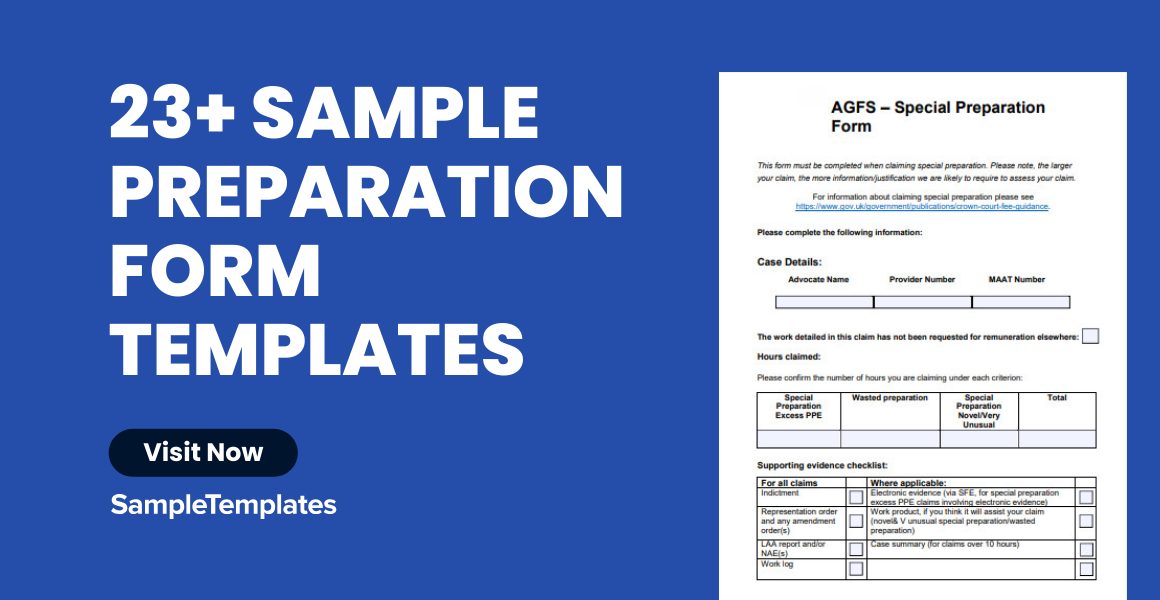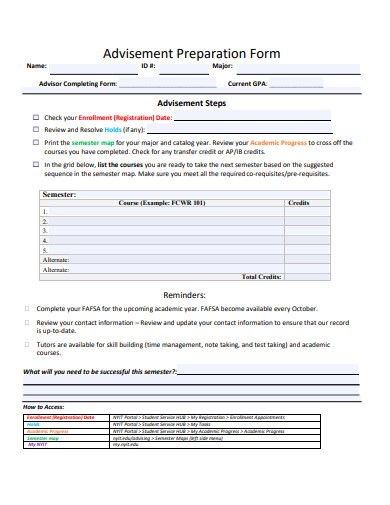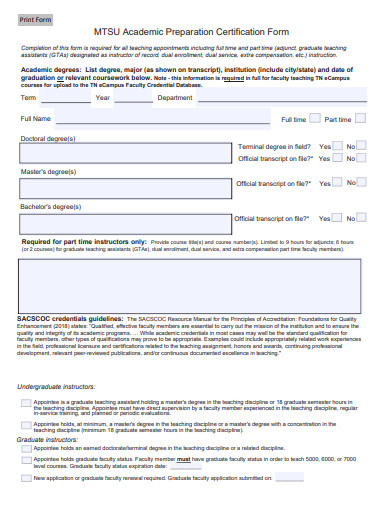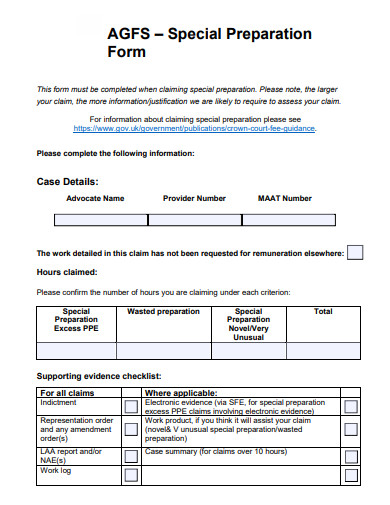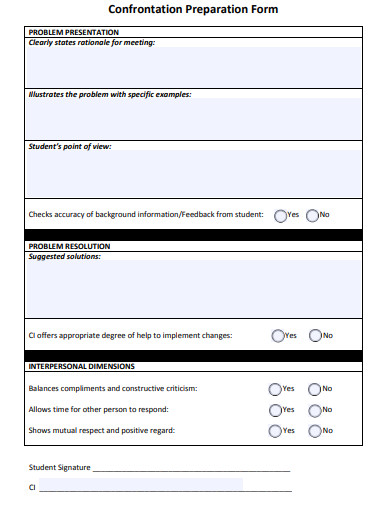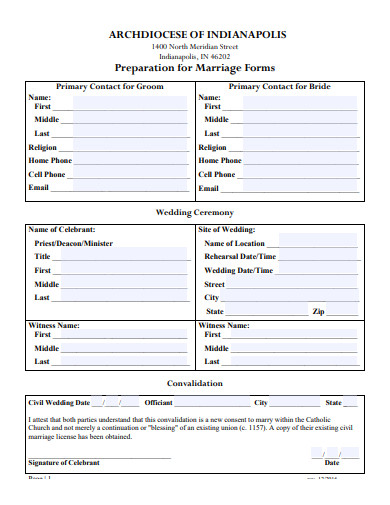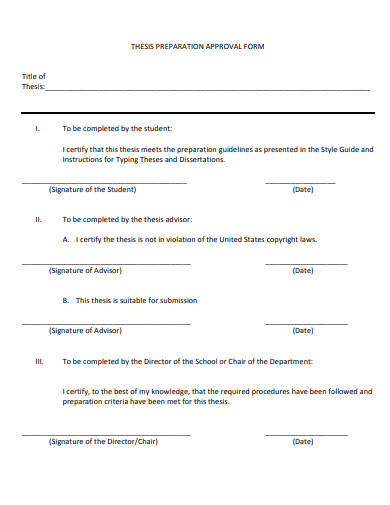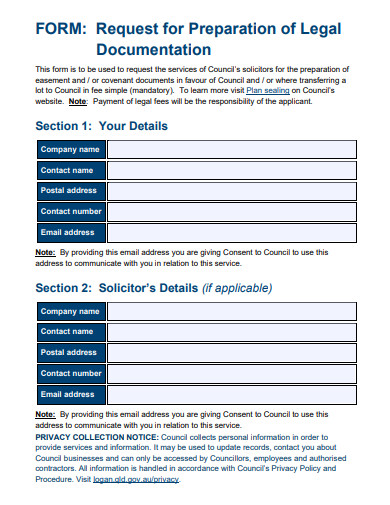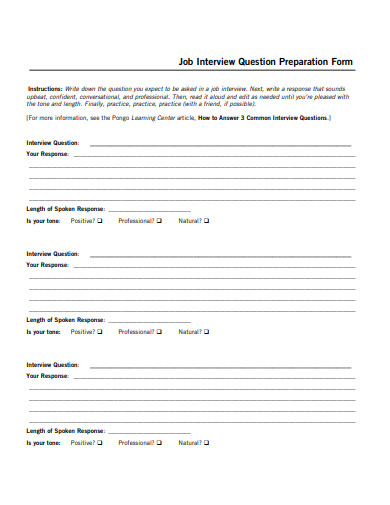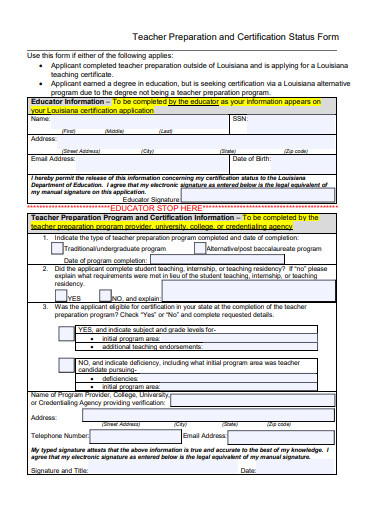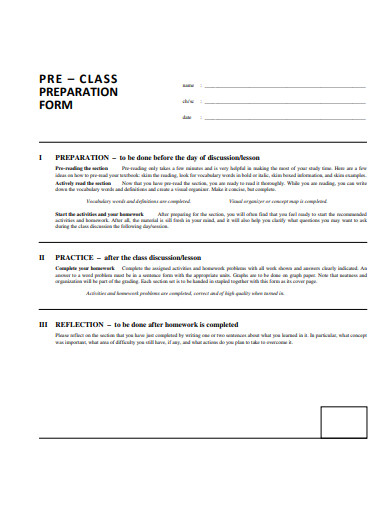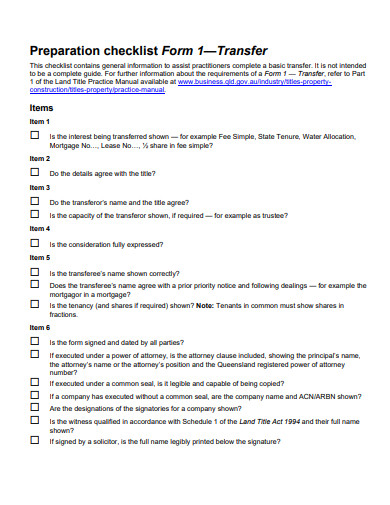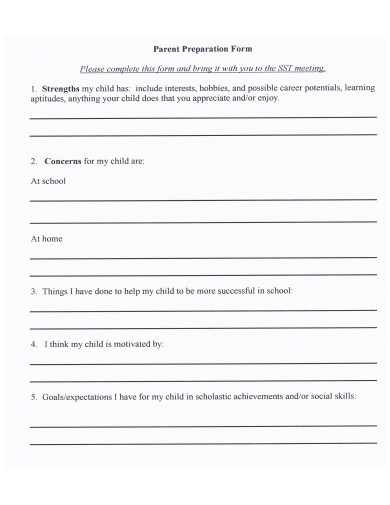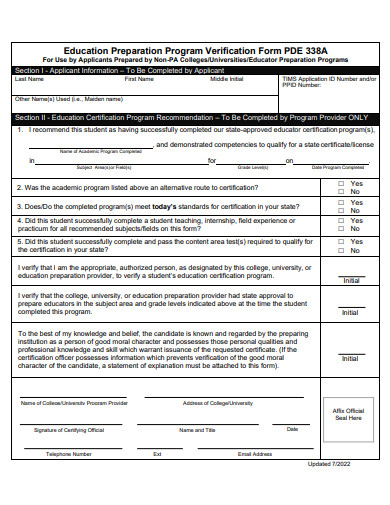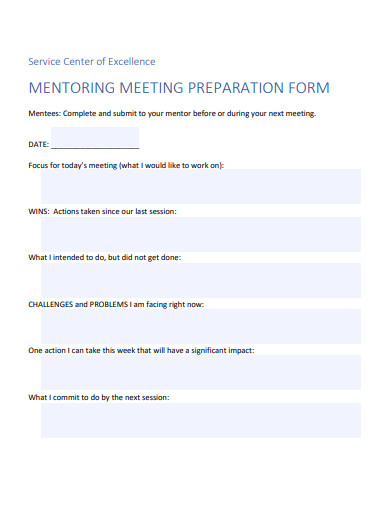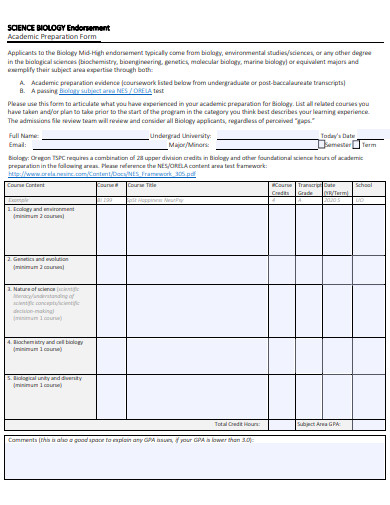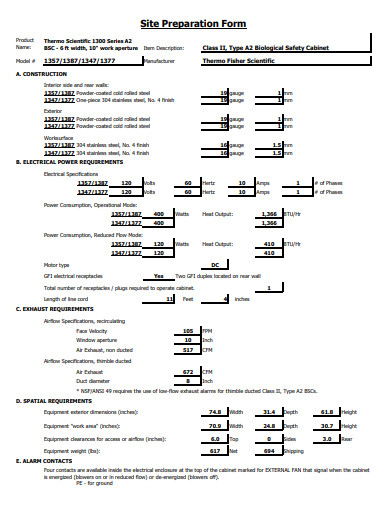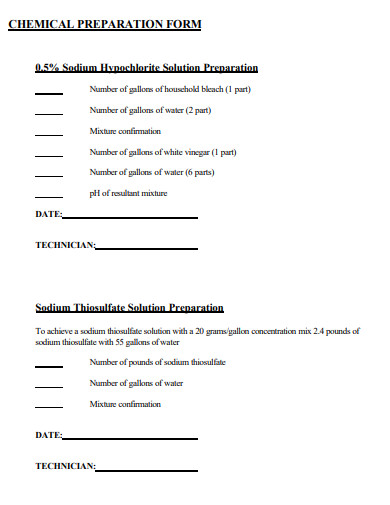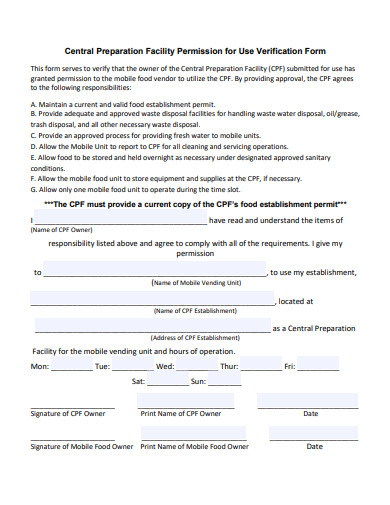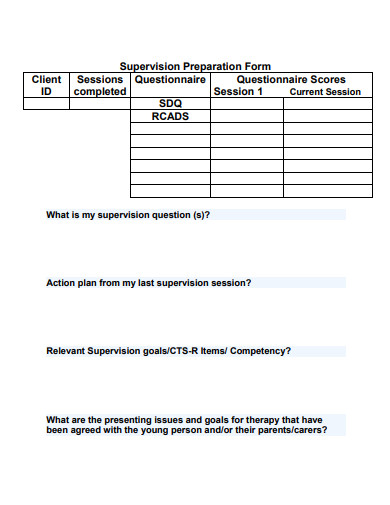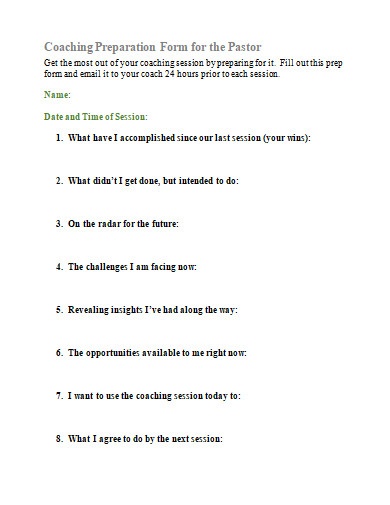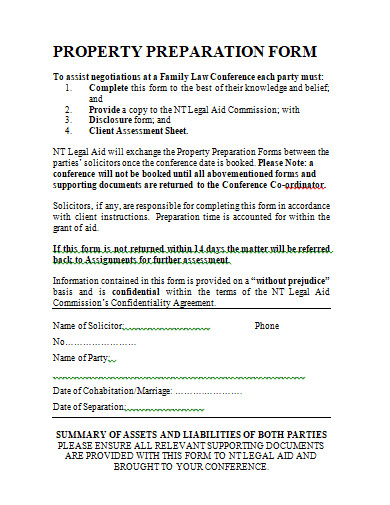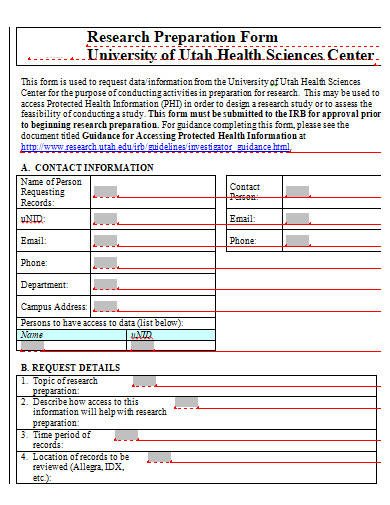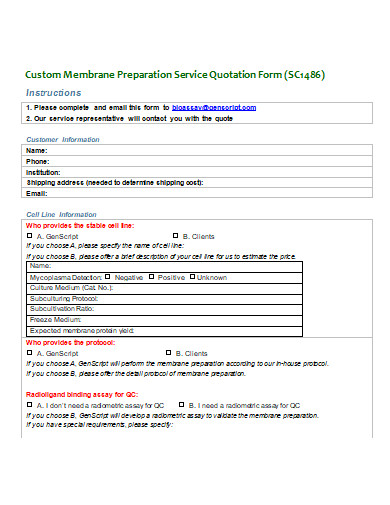Dive into our meticulously crafted Sample Preparation Form, designed to streamline your processes and enhance efficiency. Whether you’re a researcher, educator, or professional, sample form is your passport to accurate and organized data gathering. Infused with user-friendly features, our tool is optimized for maximum performance, ensuring you stay ahead in your endeavors. Explore now to experience a blend of precision and simplicity. Don’t just prepare; prepare smartly with our industry-leading solution.
23+ Preparation Form Samples
1. Advisement Preparation Form Template
2. Academic Preparation Certification Form Template
3. Special Preparation Form Template
4. Confrontation Preparation Form Template
5. Preparation for Marriage Form Template
6. Thesis Preparation Approval Form Template
7. Preparation of Legal Documentation Form Template
8. Job Interview Question Preparation Form Template
9. Teacher Preparation and Certification Status Form Template
10. Pre-Class Preparation Form Template
What is a preparation form?
A preparation form, at its core, is a systematic tool designed to assist individuals or organizations in collecting, organizing, and presenting data or information in an orderly manner. Its primary goal is to simplify complex processes by breaking them down into manageable parts.
Purpose and Utility
Preparation forms find utility in numerous fields. In research, they’re used to accumulate and process data. In business, they help in gathering information for audits, inventories, or even employee onboarding. In the field of education, they can be used to prepare lesson plans or gather feedback.
Key Features
A typical preparation form possesses some crucial elements:
- Clear Instructions: For any form to be effective, it must be user-friendly. This is achieved through concise, clear instructions, ensuring that the user knows exactly what needs to be done.
- Relevant Fields: A preparation form must contain fields that are pertinent to the task at hand. Irrelevant fields can confuse the user and may lead to the collection of unnecessary data.
- Flexibility: Since needs can vary, a good preparation form should be flexible. This means it can be adapted or customized based on specific requirements.
- Privacy Considerations: If a form is collecting personal or sensitive data, it should have guidelines or disclaimers stating how this data will be used, stored, and protected.
Benefits
Using a preparation form offers several advantages:
- Efficiency: It promotes quick and organized data collection, ensuring that no vital information is overlooked.
- Consistency: When used by multiple individuals or over different periods, it ensures that data is collected in a consistent manner.
- Analysis: Once data is gathered, it becomes easier to analyze and derive insights from it.
- Time-saving: Reduces the time spent on trying to decide what data is needed and how to collect it.
In summary, a preparation form is more than just a piece of paper or digital tool; it’s a strategic asset that ensures streamlined operations and accuracy in various tasks and projects.
What is the outline form in preparation?
The outline form in preparation is a structured method to organize thoughts, ideas, or data in a hierarchical manner. Much like the skeleton of an sample essay or a roadmap for a project, it provides a clear view of all components at a glance, ensuring no critical point is missed.
Understanding its Structure
An outline form is organized into different levels of headings and subheadings. The main topics or sections are presented first, followed by subtopics, and further broken down as needed. This hierarchy can be depicted using numbers, sample letters, or even bullet points.
Usage Scenarios
Various fields use outline forms:
- Academic Writing: Students and researchers use it to structure essays, theses, or dissertations.
- Book Writing: Authors use outlines to plot the sequence of events, chapters, or character development.
- Meeting Agendas: Organizations employ outline forms to set the flow of meetings, ensuring all points are covered.
- Project Planning: Managers use it to break down project tasks and subtasks, establishing a clear execution path.
Steps to Create an Outline Form
Identify the Purpose: Understand why you’re creating the outline. Is it for an essay, a meeting, or a project plan?
- Brainstorm: List down all the points, ideas, or tasks that need to be covered.
- Organize: Start grouping related items together. Determine the primary headings, subheadings, and any further subdivisions needed.
- Sequence: Order the points in a logical flow. This could be chronological, by importance, or any other method relevant to the topic.
- Review and Refine: Go over the outline to ensure no critical points have been missed. Also, ensure the structure flows seamlessly.
Benefits of an Outline Form
- Clarity: It provides a clear vision of the task or topic at hand, reducing chances of oversight.
- Efficiency: With a clear structure, executing tasks or writing becomes smoother and faster.
- Flexibility: Outlines can be adjusted and rearranged as needed without affecting the entire structure.
- Cohesiveness: Ensures that the final product, be it an essay, a project, or a presentation, is well-organized and cohesive.
To wrap it up, the outline form in preparation is an indispensable tool when one aims for precision, clarity, and organization in any project or piece of writing. It serves as a guiding light, ensuring that the end result is comprehensive and well-structured.
11. Baptism Preparation Form Template
12. Preparation Checklist Form Template
13. Parent Preparation Form Template
14. Education Preparation Program Verification Form Template
15. Mentoring Meeting Preparation Form Template
16. Academic Preparation Form Template
17. Site Preparation Form Template
18. Chemical Preparation Form Template
19. Preparation Form in PDF
20. Supervision Preparation Form Template
21. Coaching Preparation Form Template
22. Property Preparation Form Template
23. Research Preparation Form Template
24. Custom Membrance Preparation Service Quotation Form Template
How to Create a Preparation Form
Creating a preparation form is a structured process that demands a clear understanding of the objective behind it, the target audience, and the kind of data you intend to collect. Here’s a step-by-step guide to assist you in crafting an effective preparation form:
Identify the Purpose
Before diving into the design, pinpoint the purpose of your preparation form. Are you gathering research data, onboarding new employees, or collecting feedback? Your form’s design and questions will revolve around this purpose.
Determine the Format
Will your form be digital or paper-based? Digital forms, such as those created using tools like Google Forms, Typeform, or SurveyMonkey, offer ease of distribution and data collection. However, in environments where internet access is limited or for certain demographics, paper forms might be more suitable.
Decide on the Questions
This is a critical step. The type and phrasing of your questions can significantly impact the accuracy and quality of the data collected. There are various types of questions you can utilize:
Open-ended: These are questions that allow respondents to answer in their own words.
Multiple choice: Participants select one or more options from a list.
Rating scale: Respondents rate a statement on a scale, such as 1-5 or 1-10.
Yes/No: Simple binary questions.
Design with Clarity
The form should be visually appealing and easy to navigate. Here are a few design principles to consider:
Logical Flow: Questions should be arranged in a logical order. Start with general questions, gradually moving to more specific ones.
Group Similar Questions: This helps in making the form more organized and less overwhelming for the respondent.
Include Instructions: Where necessary, provide clear instructions or examples to ensure participants understand what’s required.
Consider Privacy and Consent
If your form collects sensitive or personal information, it’s vital to include a privacy statement. This sample statement should clarify how the data will be used, stored, and protected. Always seek consent before collecting and processing personal data.
Test the Form
Before rolling out the form to your target audience, test it with a smaller group. This can help you identify any confusing questions, technical issues, or design flaws. Make necessary adjustments based on the feedback.
Distribute and Collect
Once your form is ready and tested, distribute it to the intended audience. If it’s a digital form, share the link via email, social media, or your organization’s portal. For paper-based forms, ensure you have a system in place for collection and data entry.
Review and Analyze
After collection, review the data for insights. Digital form platforms often provide analytics tools, which can simplify this process. For paper forms, consider transferring the data to a digital format for easier analysis.
In conclusion, a well-crafted preparation form is invaluable for data collection and decision-making. Investing time and thought into its creation ensures accuracy, clarity, and a high response rate, ultimately leading to better-informed decisions and actions.
Related Posts
Sample Sworn Affidavit Forms
Vehicle Inspection Forms Samples & Templates
Sample Employee Advance Forms
Sample Child Travel Consent Forms
Sample Testimonial Request Forms
Sample Employee Details Forms
Sample Divorce Forms
Sample Attestation Forms
Employee Performance Appraisal Form Templates
FREE 9+ Sample Presentation Evaluation Forms in MS Word
FREE 10+ School Admission Form Samples & Templates in MS Word | PDF
FREE 30+ Patient Consent Form Samples in PDF | MS Word
FREE 10+ Sample Sign Off Form Templates in PDF | MS Word
FREE 11+ Sample Medical Consultation Forms in PDF | MS Word
FREE 8+ Sample Donation Forms in PDF | MS Word
